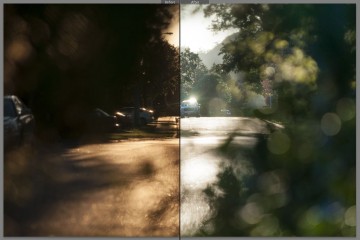Recently, I watched Adrian Grenier’s documentary Teenage Paparazzo to see how much my own role as a general assignment photographer lines up with that of the paparazzi, a job I’ve never really respected. I had been called a paparazzo in jest in the past, which really bothered me, so I decided to see what the fuss was about. The film’s scenes about the paparazzi lifestyle and the celebrity interviews were enlightening and very intriguing, but since viewing it, I became more interested in another aspect of the film — its exploration of relationships. I also found I had something in common with the paps, a revelation I clearly did not want but could not completely deny.
The film explores the one-sided interactions fans have with celebrities, calling these “parasocial relationships.” However, it’s not just a relationship between fans and celebrities or regular people and the Rich Kids of Instagram. All photographers, professional and amateur, create and experience relationships that are not always real.

This split view illustrates how a simple change in white balance can affect the perception of a staid scene in the suburbs.
Just as people can control their own public persona through their own photos, I have the power to influence the public personas of the people I photograph. When I’m not shooting for journalistic purposes, I can take greater liberties with my technical choices, and like a fiction writer, I can use techniques to alter reality if I choose. By adjusting the aperture, I can blur out the background, which makes everything look dreamy. The fantasy can be enhanced by adjusting my white balance from Auto to Cloudy, which gives everything a warm orange glow, adding romance and intrigue. By choosing what moments to capture, I can either flatter or embarrass my subjects.
These illusions of glamour deceive viewers, but they can also deceive photographers. In the 10 minutes I have to make a portrait of a client or the two seconds I have to make a snap of a public figure, there is usually a connection between me and that person. I try to make small talk and adjust their posture. If my subject likes the image on the back of my camera, there might be a laugh or a few words of praise. If my subject is a celebrity, the attention can be flattering, and our relationship seems genuine, if only for a moment. It’s easy to forget that the bond is between the subject and the photo, not the subject and the photographer. As dangerous as the fan-celebrity relationship can be, the sometimes-superficial relationship between photographers and subjects can be dangerously seductive, too.
In the film, the teenage paparazzo in question, Austin Visschedyk, gets attention from Paris Hilton and texts from Lindsay Lohan because of his age. These relationships are not deep, but they feed this boy’s ego. It creates an illusion that he is part of their world, when he is just an observer looking in.
When I started watching the film, I thought I knew exactly how my own work differed from that of the paparazzi. Straight flash, stalking until 2 a.m.: these are not my traits. I would never shoot photos destined to be deliberately misinterpreted by tabloids to create sensational headlines. However, the movie forced me to examine my own relationships with those around me, particularly my subjects and my friends, and it is a reminder that photos, like writing, can embellish. It reminds me of a universal truth in photography: no matter what lens you use, some light is lost between the front element and the viewfinder eyepiece.








